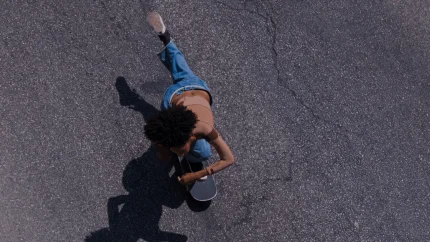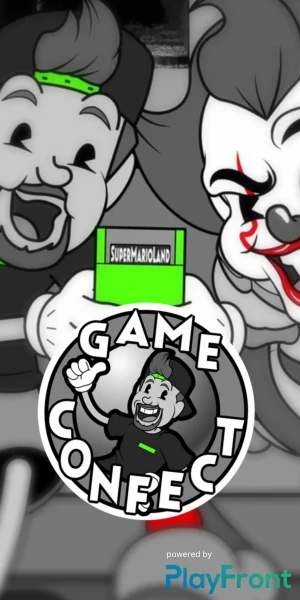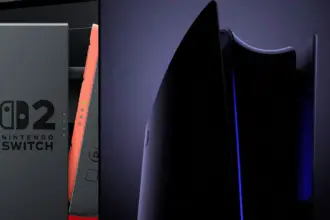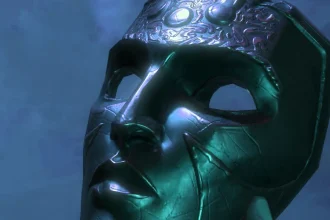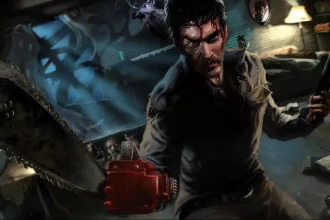When the asphalt crunches under the drifter bike and the twilight breaks through the rotten branches of Oregon's forests, you are immediately right back in the middle of it: in the world of "Days Gone", where the smell of burnt rubber, engine oil and despair hangs in the air in equal measure. Six years after the PS4 original, Deacon St. John returns - this time in 4K, with a darker night and a moon that shines more realistically than ever before. But is that enough for a real comeback? Or is it just an attempt to tease a second life out of a formerly solid but unacclaimed zombie open-world?
Oregon, you beautiful wreck
The game world of "Days Gone" has always been one of its biggest stars - and that remains the case in the remaster. Farewell, the fictional Oregon of this gloomy post-pandemic, is a raw, almost poetic piece of digital nature: snow-covered mountainsides, dense forests, rusty gas stations and forgotten cemeteries create a feeling of "American doom" between romance and ruin. The new lighting brings even more out of this backdrop - at least visually - and is one of the highlights of the remastered version.
But even if the world now glitters more prettily, it suffers from the same things as before: it is not alive. Dangers lurk everywhere, be it from freakers, ripper cults or other looters - but there is no real dynamism. You rarely see surprising encounters between AI factions, and the fact that camps react when you help them remains wishful thinking. Oregon still feels like a beautifully designed graveyard with the occasional adrenaline rush.

Bikers with heart - and an annoying tendency towards melancholy
Deacon St. John, our hero in the tattered cowhide, remains an ambivalent figure. Between stoic toughness, sentimentality and repeatedly interspersed flashbacks to his missing wife Sarah, his character fluctuates somewhere between tragic outlaw and clichéd grunt. Even in the remaster, his narrator is difficult to ignore - or rather: to overhear. Because Deacon talks to himself. A lot. Loudly. And in a pitch that often sounds more like an outburst of rage than an inner monologue.
The story itself remains one of the better ones in the zombie genre - precisely because it takes its time. Instead of following a clear goal, the plot branches out into many smaller episodes: the story of Lisa, the girl with PTSD; the morally gray camp leaders like Ada Tucker; or Deacon's relationship with his best friend Boozer, who not only loses his arm, but also almost his will to live. None of this is spectacularly new, but it is at least credibly staged - supported by cut-scenes, some of which achieve cinema quality.
Between horde madness and everyday stealth
The big highlight of "Days Gone" was and is: the Freaker hordes. These huge, pulsating swarms of zombies are not only visually impressive, but also challenging in terms of gameplay. The remaster has really turned up the heat here: Up to 800 freakers simultaneously pounce on you in the new "Horde Attack" mode. It looks spectacular, but still plays like a mixture of luck, trial & error and the occasional rage-quit.
For as impressive as the masses of enemies are, the tactics behind them remain rudimentary. In narrow corridors, hordes can be controlled to some extent - in open areas, it becomes a test of patience. The new mode promises more freedom, but quickly feels like an arena mode on speed. It's nice and chaotic, but without the narrative underpinning, you quickly lose interest - especially because the resource consumption is high, but the rewards are rather meagre.
Speedrun, permadeath and new features - useful or just filler?
In addition to the horde attack, the remaster comes with two other new modes: Speedrun and Permadeath. One is aimed at hardcore players who want to share their times with the world, the other at masochists with nerves of steel. Both are nice additions, but also clearly outside the target group of the original game. Anyone who bought "Days Gone" because of the melancholy atmosphere and story will hardly find any new gaming fun here - but rather the feeling that a few more features were needed here for the product description - or alternatively a flowery explanation as to why Sony is suddenly charging admission for what used to pass for fanservice - without any price tag.
An overhauled progression system would have been really helpful: You still get the most useful skills late in the game, weapon handling remains spongy, and many upgrade systems seem superficial. Even the bike - still a faithful companion and petrol junkie - offers customizing, but hardly any real freedom of choice. In the end, Deacon's machine is more of a stubborn companion than the cool motorcycle totem it could be. It's better not to say a word about the still stupid AI - after all, it doesn't do that either.
Crafting & resources - the silent apocalypse of inventory management
Anyone familiar with "Days Gone" knows that crafting and resource management are part of everyday life. Molotovs, remedies, ammunition - everything needs to be collected, crafted and managed. And although you now pick up something at every corner, the whole thing feels strangely tedious. Especially in horde mode, the constant searching for nails and rags quickly gets on your nerves. What's more, many items still don't stack or there's not enough space in the inventory - a relic of old design philosophy.
At the same time, risk management remains exciting. Is it worth attacking a nest if you have hardly any ammunition? Or would you rather sacrifice resources for a better relationship with the camp? Such decisions definitely contribute to immersion - but would be even more exciting if the system were a little bolder. How about moral dilemmas when looting? Or the option to specialize in certain crafting directions? Okay, I don't want to exaggerate what you can expect from a remaster, but that's exactly why the game isn't much better now than it was then.
Technology & atmosphere - more horsepower, less soul?
On a technical level, the remaster of "Days Gone" unquestionably delivers - at least on paper - and with stronger technology underfoot. 60 FPS, improved shadows, sharper textures and a more photogenic sky sound like a solid upgrade. And yes, everything now looks a bit crisper and sharper. Particularly noticeable: the smooth day/night change, which can now be controlled at the touch of a button - a nice gimmick for amateur photographers, but one that does little for immersion. The visual enhancement through native rendering instead of a checkboard is of course a welcome sight - but whether this alone really justifies the remaster remains questionable. Ultimately, I don't really care how the whole thing comes about as long as I can see clear results with my eyes at the end. And these may be measurable for pixel fetishists, but whether they are really noticeable remains to be seen. Anyone who has already played on the PS4 Pro or via backwards compatibility on the PS5 / PS5 Pro will have to look with a magnifying glass to find the real differences.
Provided that all this is available for an upgrade of 10 euros, you might think, Criticism is out of place. For a new purchase at a price of 50 euros, however, I would thankfully decline - "Days Gone" is technically still too stuck in the PS4 past for that.

Freedom of choice between quality and performance mode is of course nice, but is now standard. The PS5 version offers the usual two-course menu here with 1440p at 60 FPS or native 4K at 30 FPS - garnished with a promised 40 FPS mode via patch, which is currently still a long way off. And even if the PS5 Pro throws up impressive figures of 1800p and 2880p, it remains unclear who will actually notice these fine gradations in everyday life. The Enhanced mode with PSSR is ambitious, but provides more subtle than noticeable improvements in motion. In the end, the question remains: was this remaster really necessary - and especially at this point in time? A look at "Horizon Zero Dawn", which was released at the same time as "Days Gone" and recently received a genuine, lavishly produced remaster, provides a clear answer. In direct comparison, "Days Gone Remastered" looks more like a quick fix that Sony Bend and Climax cobbled together in a hurry.
The DualSense feedback, on the other hand, impresses with its usual strong vibrations and noticeable trigger resistance - especially when driving or reloading. Even if the famous 'hum of the engine' or the 'crunch of the road' is not always the focus in hectic horde moments, these details make a noticeable contribution to the atmosphere. And it is precisely in these moments that the outstanding soundtrack reminds us again and again why "Days Gone" once captivated so many players - intense, haunting, captivating.
Conclusion



